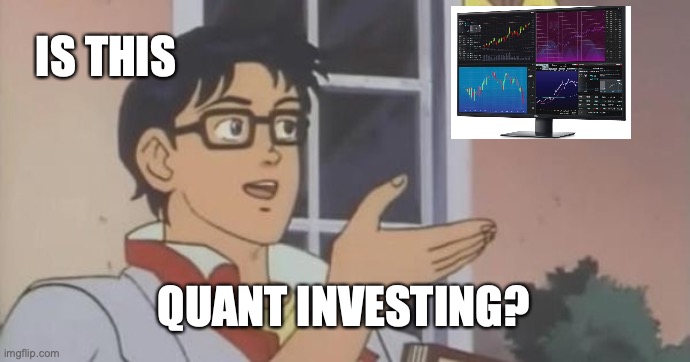1/ It's been 6 months since the low point of US markets and economic activity. Ordinarily, we'd see the first academic papers on the COVID recession emerge right around now. But thanks to new sources of data, researchers are way ahead of schedule.
🧵THREAD👇
🧵THREAD👇
2/ Let's begin with spending. Chen et al use daily transaction data -- bank cards and QR code usage from UnionPay -- to track the decline of consumer spending across 214 cities in China, one of the earliest indicators of pandemic-induced changes:
papers.ssrn.com/sol3/papers.cf…
papers.ssrn.com/sol3/papers.cf…
3/ As early as March, the BEA was using credit card transactions processed by Fiserv to track COVID's impact on consumer spending in the US, per Dunn et al:
bea.gov/system/files/p…
bea.gov/system/files/p…
4/ Cox et al use consolidated debit, credit and bank balance information from Chase to understand spending behaviour at the household level:
brookings.edu/wp-content/upl…
brookings.edu/wp-content/upl…
5/ Cavallo uses credit card data to track the changing composition of consumer spending, and then uses that info to re-calculate inflation with an updated consumption basket:
nber.org/papers/w27352.…
nber.org/papers/w27352.…
6/ Chetty et al have perhaps the most comprehensive survey of the great lockdown. Among their findings: the rich cut spending more than the poor, services fell more than durables, and businesses serving the affluent were hit the hardest.
opportunityinsights.org/wp-content/upl…
opportunityinsights.org/wp-content/upl…
7/ Their data sources include: credit card spending from Affinity, cash spending from CoinOut, small business revenue from Womply, employment and earnings from Paychex, Intuit, Earnin, Kronos & Homebase, job listings from Burning Glass and education data from Zearn.
8/ Similarly, Alexander & Karger combine cellphone location data from Unacast with consumer transaction data from Womply and Second Measure to track the heterogeneous impact of lockdowns on mobility and consumption:
papers.ssrn.com/sol3/papers.cf…
papers.ssrn.com/sol3/papers.cf…
9/ A trio of papers uses smartphone location tracking data from SafeGraph to measure the adoption and impact of social distancing over the summer.
10/ Chiou & Tucker study social distancing by income and information access:
nber.org/papers/w26982.…
nber.org/papers/w26982.…
11/ Goolsbee and Syverson compare the effect of official stay-at-home orders and self-imposed isolation (lockdowns versus fear) on social distancing:
nber.org/papers/w27432
nber.org/papers/w27432
12/ Mongey et al examine which types of workers are most affected by social distancing:
nber.org/papers/w27085.…
nber.org/papers/w27085.…
13/ Small business has been badly affected by the pandemic, and a number of papers focus on employment, closures and hiring patterns at such firms.
14/ Kurmann et al use hours-worked data from Homebase to construct real-time estimates of the pandemic's impact on employment at small businesses:
etiennelale.weebly.com/uploads/1/0/1/…
etiennelale.weebly.com/uploads/1/0/1/…
15/ Cajner et al use payrolls data to track the rebound in employment. They note that much of the rebound is "recalled" workers; also, a concentration of losses in low income jobs means that average wages are actually higher now than pre-pandemic.
nber.org/papers/w27159.…
nber.org/papers/w27159.…
16/ Forsythe et al use daily job listings collected by Burning Glass to measure the impact of COVID-19 on job vacancies and hiring:
nber.org/papers/w27061.…
nber.org/papers/w27061.…
17/ Bartik et al combine Homebase, Kronos, SafeGraph and survey data to track labour market dynamics - the pace of layoffs and rehiring, the types of workers laid off -- as well as business expectations and confidence:
bfi.uchicago.edu/wp-content/upl…
bfi.uchicago.edu/wp-content/upl…
18/ Most of the above papers rely on the "speed" of these alternative data sources compared to older, lower-frequency economic datasets. But alternative data has another key advantage -- "granularity" -- which is especially useful for evaluating policy.
19/ Policy implementation varies across regions, sectors, firms and households; by tracking economic outcomes over those same regions, sectors, firms and households, researchers can judge the reach and efficacy of those policies. Here are some papers that do precisely this.
20/ Garza Casado et al combine weekly UI data with daily credit card data from Affinity to gauge the impact of fiscal stimulus on local economic activity:
nber.org/papers/w27576.…
nber.org/papers/w27576.…
21/ Scott et al use Homebase payrolls data to examine if generous UI benefits disincentivize employment:
tobin.yale.edu/sites/default/…
tobin.yale.edu/sites/default/…
22/ Granja et al combine SBA stats, bank reporting, Homebase and Womply small business performance data, and Unacast location tracking data to gauge the efficacy (both reach and impact) of PPP loans:
nber.org/papers/w27095.…
nber.org/papers/w27095.…
23/ Autor et al use payrolls data from Paychex to see if PPP boosted employment, by comparing PPP-eligible and PPP-ineligible firms:
economics.mit.edu/files/20094
economics.mit.edu/files/20094
24/ Baker et al use transaction data from SaverLife to explore how the CARES act impacted spending decisions across different income and savings tiers, product types and liquidity situations:
bfi.uchicago.edu/wp-content/upl…
bfi.uchicago.edu/wp-content/upl…
25/ Karger & Rajan use debit and payroll card data from Facteus to measure the marginal propensity to consume for recipients of CARES funding:
chicagofed.org/publications/w…
chicagofed.org/publications/w…
26/ This list barely scratches the surface of the research going on right now! High-frequency data is transforming our understanding of fast-moving economic developments, policy decisions, and impact.
• • •
Missing some Tweet in this thread? You can try to
force a refresh





